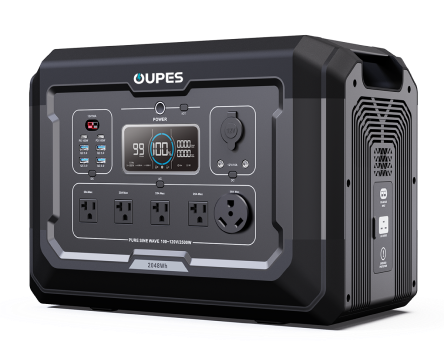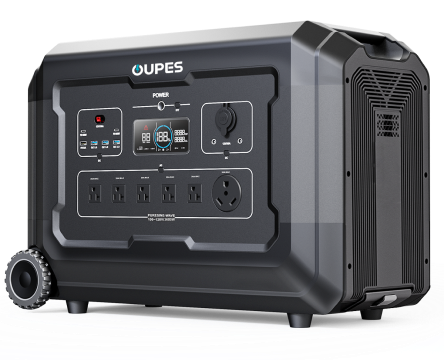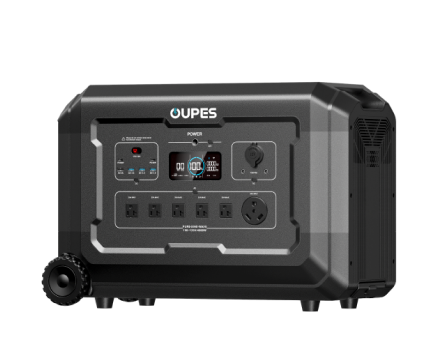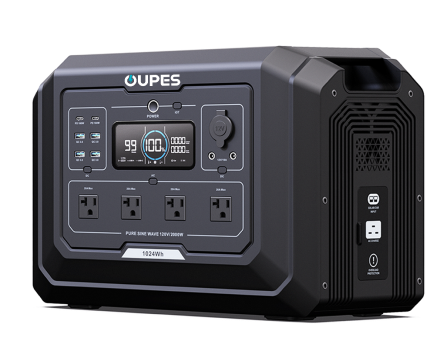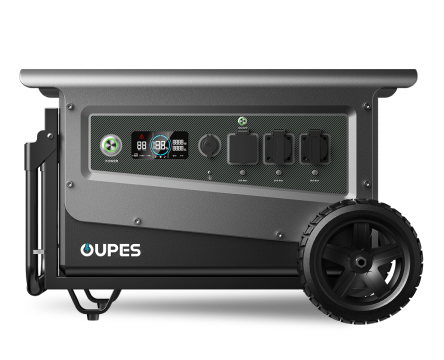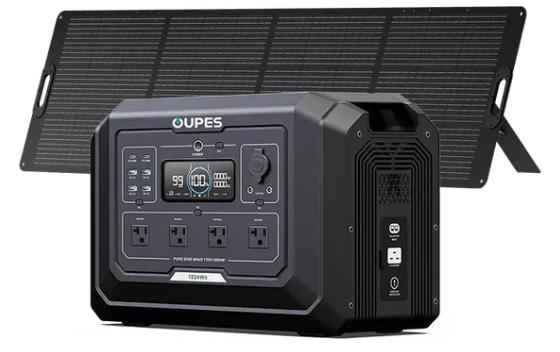
TL;DR / Key Takeaways
“PV input” on an inverter refers to the connection point where solar panels (Photovoltaic modules) deliver DC power to be converted into usable AC electricity. In practical terms, it determines how much solar energy your inverter or portable power station can accept, affecting charging speed and system efficiency. In this article, we’ll explain PV input, its specifications, and how it works in both home and portable solar setups like those from OUPES. Sources: U.S. Department of Energy, Solar Power World.
Introduction
If you’ve ever looked at the technical specifications of an inverter or a solar generator, you’ve likely come across the term “PV input.” But what exactly does it mean, and why does it matter for your solar power system? Whether you’re setting up a home backup battery or using a portable power station off-grid, understanding PV input can help you size your solar panels correctly and optimize performance. Let’s break it down step by step.
What Is PV Input?
“PV” stands for Photovoltaic, which refers to solar cells that convert sunlight into electricity. The PV input on an inverter or power station is the point where the DC electricity from solar panels is fed into the system. The inverter then converts this DC power into AC electricity — the type used by household appliances.
How PV Input Works in an Inverter
When sunlight hits your solar panels, they produce DC power. This power travels through cables into the inverter’s PV input terminals. The inverter’s built-in charge controller (often an MPPT — Maximum Power Point Tracking system) optimizes voltage and current to ensure the most efficient energy conversion. The power is then either stored in batteries or immediately used to power connected devices.
PV Input in Portable Power Stations
In portable power stations, the PV input works the same way — it allows users to charge their battery units directly from solar panels. For example, OUPES portable power stations feature high-efficiency MPPT technology that enables faster solar charging and stable performance in varying light conditions.
Why PV Input Matters
Your PV input determines how quickly and efficiently your system can harness solar energy. A system with a higher PV input rating can accept more solar power, leading to faster charging and improved off-grid reliability. For example:
| PV Input (Watts) | Approximate Solar Charging Time (for 2 kWh battery) | Use Case |
|---|---|---|
| 200W | 10–12 hours | Small portable station (camping) |
| 400W | 5–6 hours | Mid-size off-grid setup |
| 800W+ | 2–3 hours | Home backup or large capacity systems |
As shown above, systems with higher PV input capability charge faster and can sustain larger loads — a crucial advantage in emergencies or prolonged outages.
Understanding PV Input Specifications
When evaluating PV input ratings, you’ll encounter several key parameters. Let’s unpack what each means.
1. PV Input Power (Watts)
This represents the maximum solar power (in watts) the inverter or power station can accept. For example, a 600W PV input means the system can handle up to 600W of combined solar panel power.
2. PV Input Voltage (Volts)
Voltage defines the acceptable range of solar panel output that the system can safely handle. If your inverter’s PV input range is 12V–60V, connecting panels that exceed this voltage may trigger protection circuits or damage internal components.
3. PV Input Current (Amps)
Current determines how much electrical flow the inverter can handle from your panels. Matching current properly ensures the system charges efficiently without overheating.
4. MPPT Controller
The MPPT (Maximum Power Point Tracking) controller dynamically adjusts the solar input to capture the most power possible from sunlight. This feature is essential for maximizing energy harvest during cloudy or variable conditions. OUPES integrates advanced MPPT controllers in its systems for high conversion efficiency, typically exceeding 99%.
How to Match PV Input with Solar Panels
Choosing solar panels for your inverter or power station involves ensuring voltage and current compatibility. Here’s a simplified guide:
| System PV Input Range | Recommended Solar Setup | Example Use Case |
|---|---|---|
| 12V–30V / 200W | 1×200W or 2×100W panels in parallel | Portable power station for camping |
| 12V–60V / 400W | 2×200W panels in series | RV or small cabin setup |
| 12V–120V / 800W+ | 4×200W panels (series-parallel) | Home backup or solar generator |
Correctly matching your PV input ensures the inverter operates safely and efficiently. If you exceed the voltage limit, you risk damaging internal circuitry. If your panel array delivers too little power, charging speed will suffer.
PV Input Scenarios: From Homes to Adventures
1. Home Energy Storage
In a home backup system, PV input defines how quickly your battery recharges from rooftop solar panels after a power outage. High PV input ratings (1,000W–3,000W) are ideal for daily cycling and energy independence.
2. RV and Van Life
For RVs, a moderate PV input (300W–600W) allows solar panels mounted on the roof to keep the batteries topped up. This provides sustainable power for lighting, refrigeration, and electronics during travel.
3. Outdoor Camping
When camping off-grid, smaller units with 100W–300W PV input can easily recharge during the day, ensuring your lights, phones, and cameras stay powered at night.
Benefits of High PV Input Capacity
- Faster Charging: Accepts more solar input, reducing downtime.
- Greater Flexibility: Supports a wider range of solar panels and voltages.
- Improved Efficiency: Works optimally with MPPT controllers to capture the most energy possible.
- Enhanced Off-Grid Independence: Ideal for emergencies, camping, and sustainable living.
Safety Considerations for PV Input
While PV input systems are safe when used properly, improper installation can cause overheating or failure. Follow these best practices:
- Never exceed the inverter’s voltage or wattage ratings.
- Use MC4 connectors for secure and weatherproof connections.
- Position panels at optimal angles to prevent energy loss.
- Ensure adequate ventilation for inverters and batteries.
According to the National Renewable Energy Laboratory (NREL), well-designed solar systems reduce energy loss and extend component lifespan by up to 30%.
OUPES and PV Input Optimization
OUPES portable power stations and solar generators are designed with high-efficiency PV input systems that make solar charging faster and more reliable. Our LiFePO₄ battery technology and MPPT-controlled charging ensure stable performance even in variable sunlight — giving you confidence whether you’re powering your home or traveling off-grid.
FAQ
1. What does PV stand for?
PV stands for Photovoltaic, referring to the technology that converts sunlight into electricity.
2. How do I calculate the right PV input size for my system?
Match your inverter’s maximum PV wattage and voltage range with your solar panel array. For example, if your system allows 600W PV input and 12–60V, two 300W panels in series are ideal.
3. Can I connect multiple panels to one PV input?
Yes, but ensure the combined voltage and current remain within the inverter’s rated PV input range.
4. What happens if I exceed the PV input voltage?
Exceeding voltage can damage the inverter’s MPPT or internal circuitry. Always check your panel specifications before connecting.
5. Do cloudy days affect PV input efficiency?
Yes, reduced sunlight lowers power generation. However, MPPT technology adjusts input dynamically to extract maximum power even under low light.
Conclusion
Understanding PV input is key to maximizing your inverter or portable power station’s performance. By choosing panels that match your system’s PV input rating, you’ll ensure faster charging, longer component lifespan, and better energy efficiency. Whether you’re setting up an off-grid home or powering your next outdoor trip, OUPES makes it simple to harness solar energy safely and effectively.

